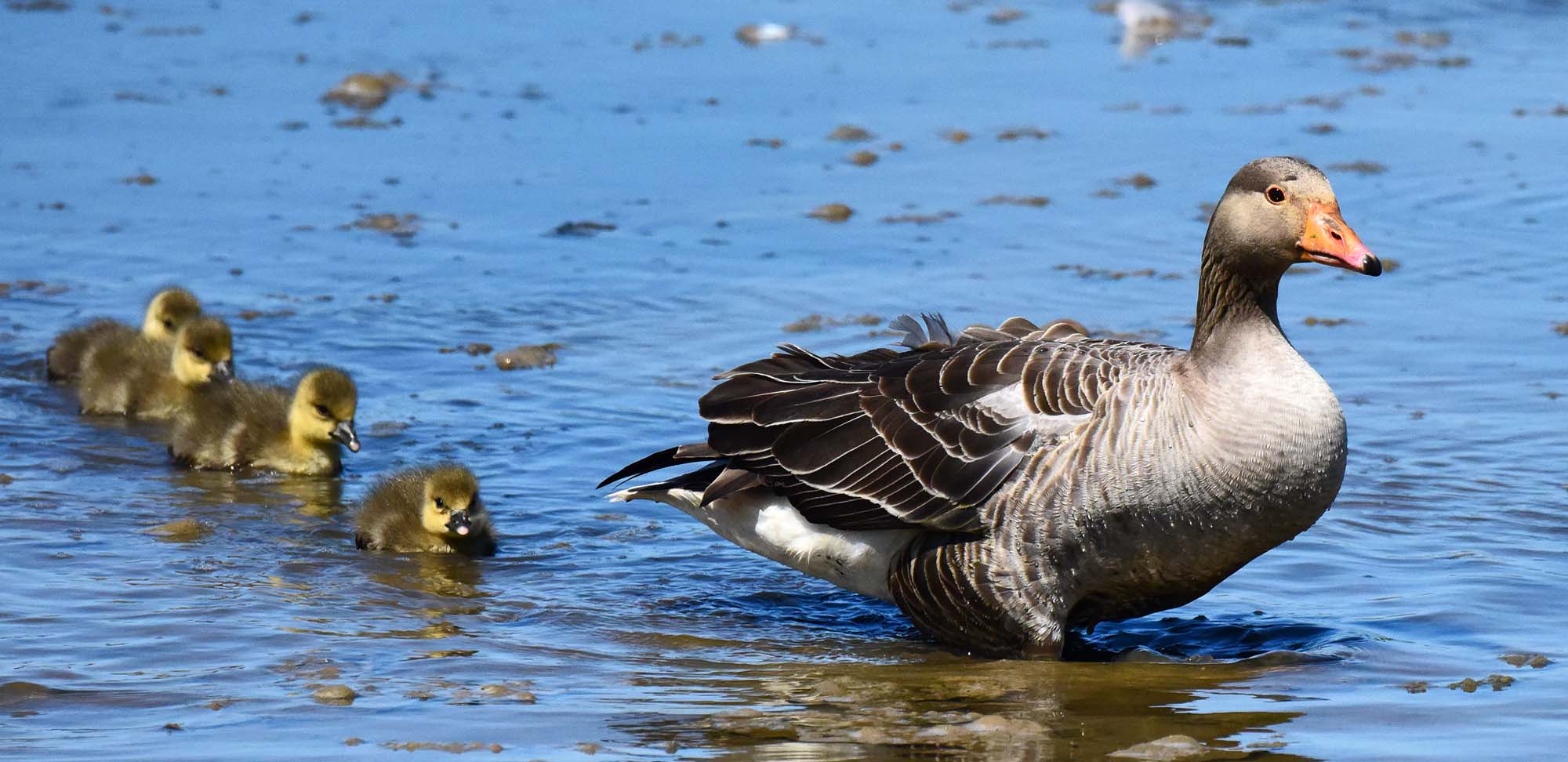Not sure which Europe tour to choose? Click to see a complete listing and comparison of all our Europe trips.
Great Britain may be a busy island full of people, but it is also blessed with some wonderful countryside holding a good cross section of European songbirds, shorebirds, and seabirds. Our tour begins with a comprehensive journey through East Anglia, long considered a mecca for British birdwatchers. This is an excellent place to start your European birding with those species for which the UK has a special attraction. The nation's obsession with gardens has encouraged a number of species that are tricky, skulking woodland birds in mainland Europe to become endearing "yard birds": European Robin, Eurasian Blackbird, Song Thrush, Dunnock, and the colorful Eurasian Blue and Great tits are all surprisingly approachable here. We should also have the chance to enjoy Garden Warbler, Eurasian Blackcap, and Common Nightingale -- species that may not look like much in the field guide, but just wait until you hear them sing!
We'll travel through coastal marshes where Western Marsh-Harriers patrol above colorful gatherings of Common Shelducks, Pied Avocets, and Northern Lapwings, and where Bearded Reedlings flit through the swaying reedbeds. At this time of year, the East Anglian coast is a great meeting place for birds heading north to breed (some bound for points as far as the high Arctic), and we can expect to see a good selection of shorebirds, all designed to test our observational skills! Inland from the coast, East Anglia's Breckland offers a complete contrast; its dry stony heaths harbor the peculiar Eurasian Thick-knee (Stone-Curlew) while the remarkable songs of Wood Larks and Tree Pipits play out overhead. We'll take in visits to Sutton Hoo, site of one of the most complete Anglo-Saxon treasure hoards ever found, and Blickling Hall, one of East Anglia's most famous stately homes.[Our tour description text continues below the video.]
Guide Megan Edwards Crewe has compiled a video of highlights from the 2025 Birds of Britain Field Guides birding tour that we think you'll enjoy watching! Click on the video to get it started, or on the fullscreen icon at bottom right of the video to see it in larger format.
Our post-tour extension to Scotland extends the main tour by five days. With its tight patchwork of fields and hedges interspersed with oak and ash woods, and its wild, wide-open moors, Scotland offers a stark contrast with lowland England. We'll begin with an exploration of Speyside. The babbling waters of the salmon-filled Spey River tumble through well-watered valleys of birch wood and cattle pasture. Here, we'll seek Common Redstart, Wood Warbler, and Lesser Redpoll among others, while White-throated Dipper, Common Sandpiper, and Gray Wagtail feed busily along the river itself. Nearby are some of Scotland's oldest and most scenic native Scots Pine forests, home to Black Grouse, Eurasian Siskin, Crested Tit, and the UK's only endemic--Scottish Crossbill. In the vast Cairngorm National Park and surrounding moorland, we'll scan extensive heather moors and rocky rills for the likes of Ring Ouzel, European Golden-Plover, and the endemic race of Willow Ptarmigan (the famous "Red" Grouse), and moorland lochs may yield Horned Grebe, Common Redshank, and Arctic and Red-throated loons. After several days, we'll move to the historic city of Aberdeen, which offers us a base from which to explore the country's rugged coast in search of Atlantic Puffin, Black Guillemot, Common Murre, Razorbill, Northern Gannet, Black-legged Kittiwake, and European Shag.
May is simply a wonderful time to visit Britain, with the rural landscape at its greenest, bird song and nesting activity at a peak, and spring migration still in full flow.
If you would like to have a little fun preparing for the tour by listening to the songs of some of the common species along our route, you can do so at this BBC link. Enjoy!
Select the KEY INFO tab or click here for our itinerary plus space requests, status, fees, limits, and guides for any departure.
Client comment
"I wanted to see Great Britain and Scotland and couldn't think of a better way to see the country than to go on a bird tour with two excellent guides who live there, Megan Edwards Crewe and Willy Perez. Everything was great from working with the office staff to the handling of all the logistics by Megan and Willy. The tour was everything that I expected from great guides and a great itinerary." B.B., BIRDS OF BRITAIN


